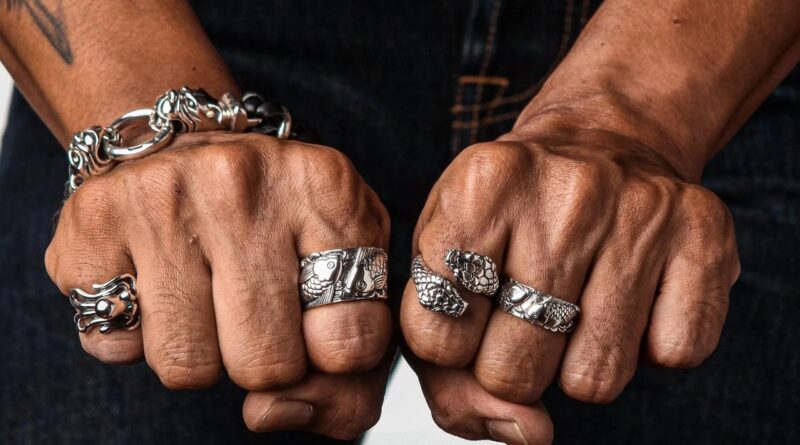Carp Koi Rings: Who can Wear this Jewelry and its Symbolism
Rings and accessories depicting the Japanese carp are now in vogue. The reason for such popularity is not only the vivid colors of these fish but also the variety of meanings invested in them. In Asian countries, carps koi are deeply revered. Their images decorate various household items, ceramics, home décor, etc. In the late 19th century, Japanese ceramics became very popular in Europe. A picture of the bright and colorful carp koi became the prototype for Golden Fish, a wish-fulfilling magic creature. Now the images of koi carps can be found everywhere – on tattoos, jewelry, fabric paintings, etc.
What are Koi Carps?
Koi carps are fish that the Japanese refused to eat. In the Land of the Rising Sun, there are many hard-to-reach mountainous prefectures, for example, Niigata. In the old days, there was not enough protein food. Carp became a resource for such a food. Allegedly, carps were imported from China in the 14th century. At that time, the color of the fish was dark.
However, natural mutations led to the hue abnormalities. The Japanese considered such changes to be a sign of the gods and wanted to preserve them.
These carps began being treated like domestic animals. People crossed the colorful fish with each other and, as a result, the familiar appearance of koi carps occurred.
Now there are 14 approved colors of koi. This fish became a national symbol and, according to the Japanese, it is a signifier of good luck.
The Importance of Carp Koi in Japanese Culture
In the Land of the Rising Sun, this fish signifies persistence and hardiness. The Japanese honor its resilience and tenacity in the struggle for life when it is caught as well as its calm at the moment of death.
In general, koi symbolizes struggle, willpower, the ability to overcome difficulties and achieve goals. Such traits were believed to be characteristics of men, therefore, the carp was perceived as a symbol of manliness. On the Children’s Day, Japanese enjoy adorning their houses with carp figures made of fabric. The symbolism of these decorations is to wish kiddos to be healthy and prosperous. Additionally, when a boy was born, parents hung a carp koi flag over their dwelling.
However, later the carp became a symbol of family well-being and the joy of life. In Japanese the words “love” and “koi” sound the same. Therefore, carp koi also began to denote the love between a man and a woman. The images of carps with a certain color are also symbolic. For example, a black carp acts as a symbol of the father, the red symbolizes the mother, the blue represents the son, and the pink carp signifies the daughter.
The symbolism of Carp Koi
As we’ve already mentioned, koi carps are a symbol of energy and perseverance. As it often happens with animal symbolism, these values shaped as a result of a long observation of carps’ behavior in various situations. The constant struggle is a way of their life. They always have to overcome the current and travel kilometers in search of food and a place for breeding. People noticed that these fish are very purposeful, strong, and durable. Such qualities have become continuously associated with these beautiful fish.
Chinese have a tale about brave carps who are not scared of swimming against the stream to the mouth of the sacred Yellow River. When they reach the realm of the Dragon, they turn into a dragon or dragonfish as a reward for their efforts. For this reason, Chinese called koi the prince of all water creatures as well a symbol of might and excellence. Along with that, koi carps denote achieving noble goals. It is, as it were, a prime example of accomplishing the desired results through surmounting obstacles.
In Buddhism, carp koi means courage, fearlessness, and good luck (they treat this fish like heralds of luck). Another name for koi is “the sacred fish of Tai”. It is a symbol of triumph and spiritual achievements. Koi carps are often depicted as a pair, swimming one after another. They form a figure resembling Yin-Yang, a symbol of balanced harmony and relationship between a man and a woman. A pair of koi carps is often depicted on various wedding attributes, such as this silver koi tattoo rings.
Koi carps live approximately 200 years, so it is no wonder that they also symbolize longevity.
Carp Koi in Culture
The koi fish resemble jewel or gems floating in the water. However, jewelry in the traditional sense was not widespread in Japan because a kimono and lush hair of a Japanese woman would hide ornaments. Therefore, old jewelry pieces with koi carps are mainly hair ornaments and various accessories.
The carp symbol became very popular in the 19th century in Europe. You can frequently meet it in items created by European craftsmen and jewelers. For example, the famous goldfish clock crafted by Van Cleef & Arpels is a recognized piece of art. The fish clock is crafted from two-tone gold and is embellished with 800 precious stones. The fish’s mouth holds the clock’s face and you can reveal it only by levering the tail.
Japanese Satsuma Ceramics often depicts koi fish, especially popular is the legend of Kinko. He was an old artist who painted a fish but didn’t want to eat it. In gratitude, the King Dragon King sent him an invitation to its underwater kingdom.
Today, you can easily find captivating carp koi jewelry. Unlike a silver skull ring that organically fits with a manly image, koi fish rings are suitable for both men and women. You can even show your feelings to your significant other by giving her or him a ring depicting a pair of koi carps and putting the same ornament on your finger.




